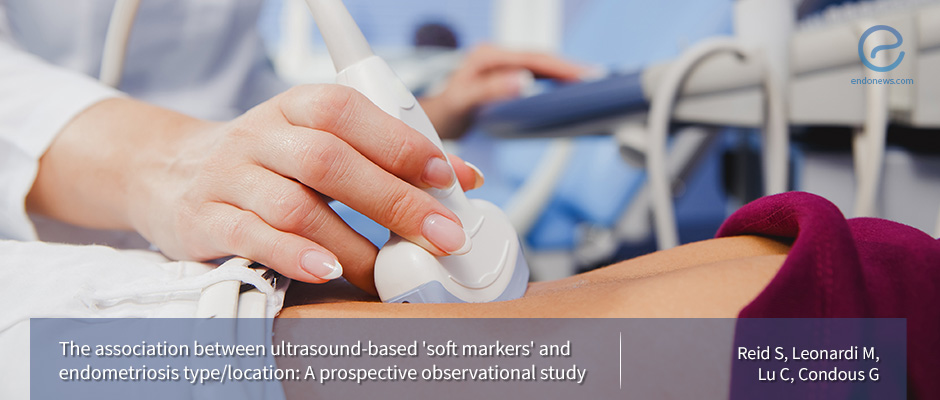Signs and Symptoms on Transvaginal Ultrasound associated with the presence of endometriosis.
Feb 21, 2019
What ultrasound examination signs can be used to aid the diagnosis of endometriosis?
Key Points
Highlight:
- Pelvic sidewall superficial endometriosis is less likely to be present in women with a mobile ovary, in the absence of endometrioma or deep infiltrating endometriosis.
Importance:
The insufficiency to determine, specifically, to exclude superficial endometriosis, results in difficult situations for women, caregivers, and those who are funding the healthcare.
What’s done here?
- Authors aim to investigate the possible association between transvaginal ultrasound (TVUS) ‘soft markers’ and symptoms with endometriosis type and location.
- The study ultimately included 189 patients with chronic pelvic pain who underwent clinical workup for endometriosis.
- ‘Soft markers’ such as ovarian immobility, site-specific tenderness were evaluated at the time of TVUS, compared to clinical symptoms and physical examination.
Key results:
- Ovarian immobility on TVUS was significantly associated with ipsilateral pelvic pain, uterosacral ligament, pelvic sidewall superficial endometriosis, endometrioma, posterior compartment deep endometriosis, and the pouch of Douglas involvement.
- The study found no significant relationship between specific symptoms and location of superficial endometriosis.
- Diarrhea was the only symptom significantly associated with isolated superficial endometriosis.
- Site-specific tenderness on the left adnexa was significantly associated with superficial endometriosis in the left pelvic sidewall.
Limitations:
- Small sample size, inter/intraobserver variation in assessment of site-specific tenderness, lack of histopathological confirmation of endometriosis in all the participants with suspected superficial endometriosis are some of the limitations in this study.
Lay Summary
Endometriosis is a disease whereby ectopic endometrial cells are present outside of the uterus. Transvaginal ultrasound (TVUS) is a highly specific test for endometriomas and deep endometriosis to assess the involvement of endometriosis in the posterior anatomic compartments. While the diagnosis of these involved areas can be performed using ultrasonography, the gold standard continues to be surgery and histopathologic confirmation especially for the diagnosis of superficial endometriosis.
This study conducted by Reid et al. from several institutions in Sydney, Australia evaluated and ultimately included 189 patients with chronic pelvic pain who underwent clinical workup for endometriosis. At the time of TVUS, ‘soft markers’ such as ovarian immobility, site-specific tenderness were evaluated and compared to clinical symptoms, physical examination. The article published in the European Journal of Obstetrics & Gynecology and Reproductive Biology.
In women with suspected endometriosis, the combination of symptoms, physical examination, and ovarian immobility on TVUS had a sensitivity and specificity of 92 an 61%, respectively for the detection of endometriosis. Of the 189 women included in the study, 92/189 (48.7%) had a history of endometriosis, of which 122/189 (64.6%) had superficial endometriosis while 46/189 (24.3%) had endometriomas and 57/189 (30.2%) of patients had posterior compartment deep endometriosis. Women who were found to have ovarian immobility on TVUS were also found to have associated symptoms including dyschezia, dysmenorrhea, rectal bleeding, right or left lower abdominal pain, and tenesmus (p<0.05).
Diagnostic accuracy results for ovarian immobility at TVUS and location of ipsilateral pelvic sidewall superficial endometriosis showed a low sensitivity and positive predictive value, for both the right (7% and 14%, respectively) and left ovary (16% and 27%, respectively) in women with isolated superficial endometriosis.
Ultrasound-based ‘soft markers’ in this study were found to be potential tools in the work-up of endometriosis management. Ovarian immobility was significantly associated with superficial and deep endometriosis and the pouch of Douglas obliteration. Additional research is needed to further evaluate the results of this observational study.
Research Source: https://www.ncbi.nlm.nih.gov/pubmed/30708269
endometriosis ultrasound deep endometriosis

